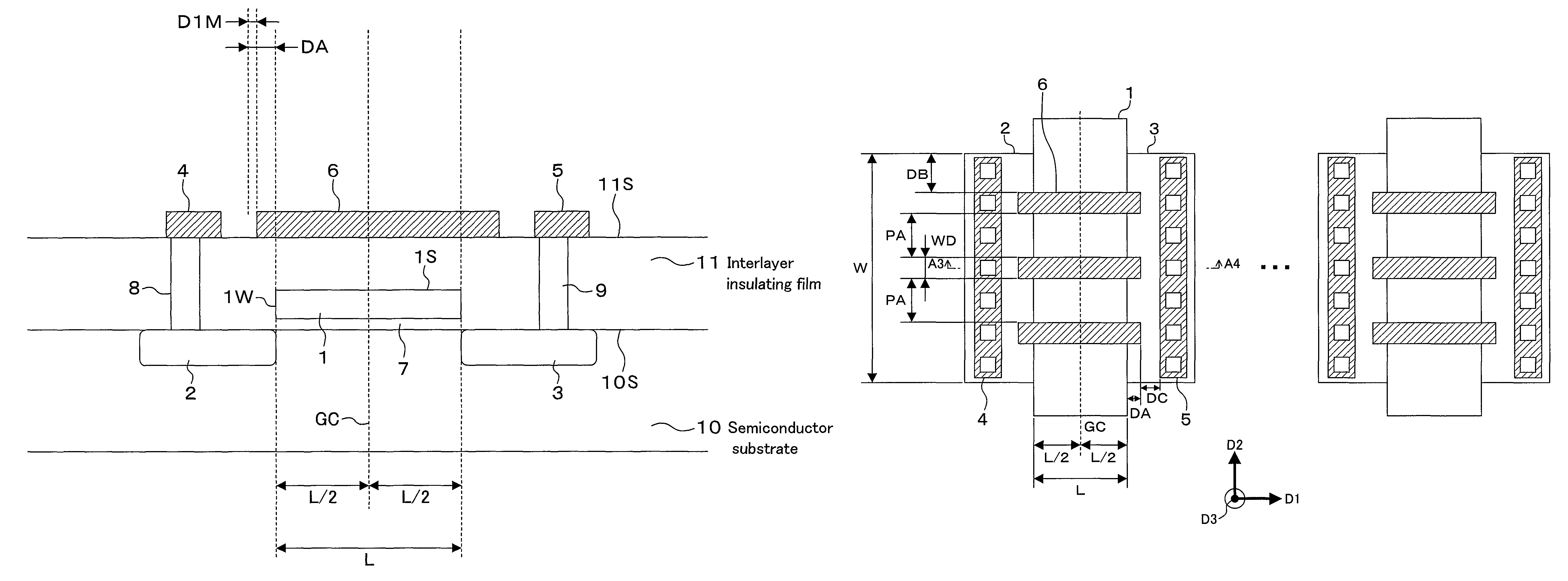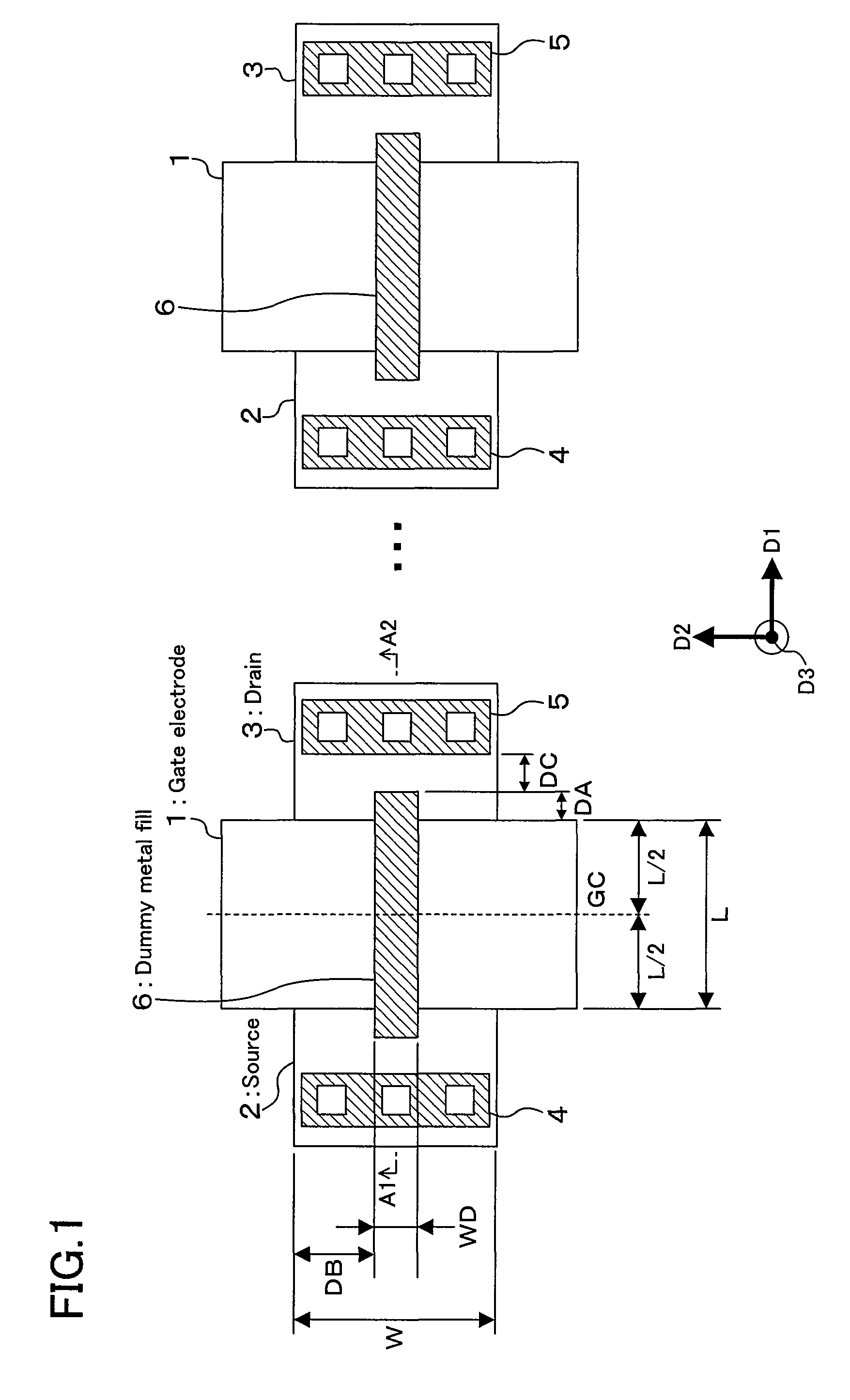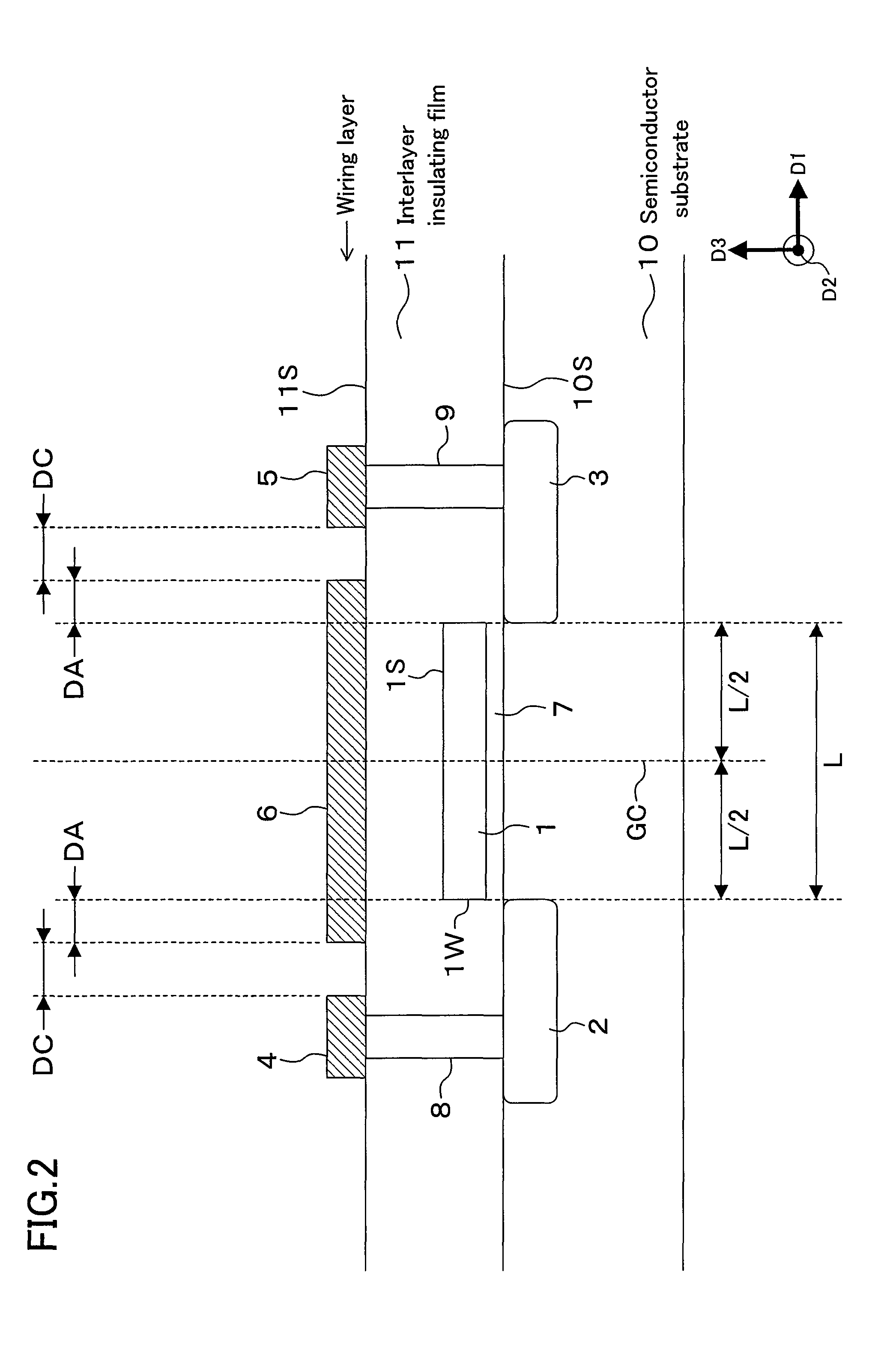Semiconductor device
a technology of semiconductor devices and metal segments, applied in semiconductor devices, semiconductor/solid-state device details, electrical apparatus, etc., can solve the problems of excessive polish, inability to achieve intended planarity, and high cost, and achieve the effect of without increasing the parasitic resistance of source and drain, and not increasing the width of each dummy metal segmen
- Summary
- Abstract
- Description
- Claims
- Application Information
AI Technical Summary
Benefits of technology
Problems solved by technology
Method used
Image
Examples
embodiment 1
[0075]FIG. 1 is a plan view illustrating a plurality of MOS transistors (MOSFETs) formed in a semiconductor device according to Embodiment 1 of the present invention. FIG. 2 is a longitudinal section taken along the line A1-A2 shown in FIG. 1, illustrating the structure of any one of the plurality of MOS transistors.
[0076]As shown in FIGS. 1 and 2, each of the MOS transistors formed on a semiconductor substrate 10 includes a first main electrode region 2 and a second main electrode region 3 as a source and a drain (hereinafter may be referred simply to the source 2 and the drain 3), and a gate electrode 1 for controlling a current flowing between the source and the drain. The first and second main electrode regions 2 and 3 are formed within the semiconductor substrate 10. The gate electrode 1 is formed on a top surface of a gate insulating film 7 formed on part of a principle surface 10S of the semiconductor substrate 10 located between the first and second main electrode regions 2 ...
embodiment 2
[0087]Embodiment 2 of the present invention is directed to a modified version of the semiconductor device of Embodiment 1 described above. FIG. 5 is a plan view illustrating a plurality of MOS transistors in a semiconductor device according to the present embodiment. In FIG. 5, the same components as those shown in FIG. 1 are indicated by the same reference numerals. A longitudinal section taken along the line A3-A4 indicated in FIG. 5 is the same as the longitudinal section of FIG. 2.
[0088]According to the present embodiment, as shown in FIG. 5, a plurality of dummy metal fills 6, each of which has the protrusion length DA as explained in Embodiment 1, are arranged in the second direction D2, i.e., the gate width direction, in a stripe pattern above the gate electrode 1. For example, when the channel width of the MOS transistor is greater than the maximum wiring width allowable under the design rule, the plurality of dummy metal fills 6 are arranged in a stripe pattern as shown in ...
embodiment 3
[0091]Embodiment 3 of the present invention is directed to a modified version of the semiconductor device of Embodiment 1 described above. FIG. 7 is a plan view illustrating MOS transistors in a semiconductor device according to the present embodiment. In FIG. 7, the same components as those shown in FIG. 1 are indicated by the same reference numerals. FIG. 8 is a longitudinal section taken along the line A5-A6 shown in FIG. 7. FIG. 9 is a longitudinal section taken along the line A7-A8 shown in FIG. 7.
[0092]According to the present embodiment shown in FIGS. 7 to 9, for the purpose of further size reduction of the MOS transistor of Embodiment 1, the dummy metal fill 6 is configured to overlap with the source electrode 4 as a first metal electrode and the drain electrode 5 as a second metal electrode in the first direction D1, i.e., in the gate length direction. More specifically, the source contact 8 and the drain contact 9 are arranged to have a minimum distance DD allowable under ...
PUM
 Login to View More
Login to View More Abstract
Description
Claims
Application Information
 Login to View More
Login to View More - R&D
- Intellectual Property
- Life Sciences
- Materials
- Tech Scout
- Unparalleled Data Quality
- Higher Quality Content
- 60% Fewer Hallucinations
Browse by: Latest US Patents, China's latest patents, Technical Efficacy Thesaurus, Application Domain, Technology Topic, Popular Technical Reports.
© 2025 PatSnap. All rights reserved.Legal|Privacy policy|Modern Slavery Act Transparency Statement|Sitemap|About US| Contact US: help@patsnap.com



